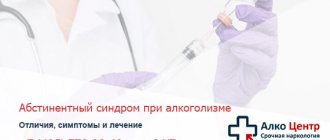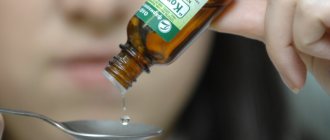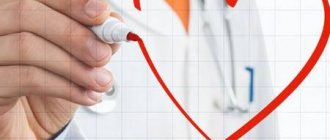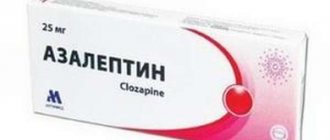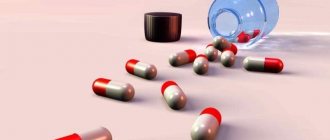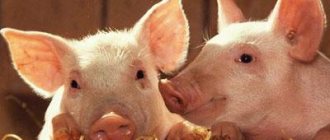Ergotism - main symptoms:
- Headache
- Weakness
- Convulsions
- Vomit
- Diarrhea
- Lack of menstruation
- Muscle pain
- Increased sweating
- Malaise
- Depression
- Pain syndrome
- Anxiety
- Rave
- Creepy crawling sensation
- Corneal opacity
- Disorders of the gastrointestinal tract
- Formation of necrosis
- Depression
- Stupor
- Rejection of dead tissue
What is ergotism
Ergotism is the poisoning of a person by food, for example, flour products, which contain a pathogen such as ergot, which may also be present in some medicines.
Ergot is a genus of fungi that “lives” on grain crops (wheat, rye). It is used in small quantities in pharmacology. Medicines based on it are used to treat migraines, nervous disorders, and bleeding from the uterus.
Epidemics
In the Russian Empire, 24 major epidemics were recorded from 1710 to 1909.[4] The last major epidemic was observed in some areas of the south in 1926-1927; in 1926, the number of cases was 11 thousand[5].
The last major epidemic, which is considered an epidemic of ergotism, occurred in the south of France, in the city of Pont-Saint-Esprit in 1951: 250 residents fell ill, 4 of them died [6]. However, a number of researchers see the cause of this epidemic as mercury[7] or nitrogen trichloride[8] poisoning.
Causes of ergotism
Ergotism occurs due to the toxic effect on the body of the active substances that make up ergot - ergotamine alkaloids and ergotoxin. They have a negative effect on the central nervous system.
The following effects are observed from their action:
- stimulation of serotonin receptors;
- the effect of serotonin increases;
- serotonin reuptake does not occur in neurons.
As a result, irreversible changes occur in the spinal cord, and diffuse infiltrations occur in the brain. Alkaloids block receptors and constrict blood vessels, which causes muscles to contract incorrectly and disrupts the nutrition of the tissues of the arms and legs.
There are also other reasons for the development of this disease, namely:
- improper and monotonous diet;
- low immunity due to frequent infectious pathologies;
- disruption of the endocrine system.
The cause of the development of pathology can be reliably determined using diagnostic methods.
Ergot.
Diagnostics and first aid
If signs of an acute form of ergotism are detected, it is recommended to call a doctor and provide first aid to the victim.
Simple steps will help stop the toxin from spreading throughout the body. What to do:
- Perform gastric lavage; for this purpose, use a couple of liters of clean water,
- After washing, the victim is given a sorbent to speed up the removal of the toxin,
- If a person has the urge to vomit, then care must be taken to ensure that he does not choke.
- If there are mental disorders, they monitor the safety of the poisoned person and the people around him.
After carrying out the described measures, the injured person is transferred to doctors. The hospital conducts a thorough examination before making a diagnosis and prescribing treatment. First of all, they interview the victim and the people accompanying him.
Pay attention to characteristic symptoms. Bread that gets into food is examined using organoleptic and luminescent methods. Once the diagnosis is made, appropriate treatment is selected.
Classification
In medicine, ergotism is divided into types:
- convulsive (convulsive);
- gangrenous.
The convulsive or convulsive form is accompanied by symptoms such as:
- tonic convulsions;
- dizziness;
- paresthesia.
- nausea;
- severe vomiting;
- pain in the stomach.
The duration of the disease ranges from three to six weeks, and in some cases relapses are possible. In severe cases of pathology, there are hallucinations and disturbances of consciousness.
The gangrenous form of the disease mainly affects the blood vessels and nerves of the patient.
The following features are typical for such a clinic:
- cyanosis;
- pain in the arms and legs;
- visible necrosis of the fingers (later it appears on the legs, face and chest).
The course of the pathology is similar to dry gangrene, with dead tissue falling off. If the disease is neglected, then gangrene with tissue necrosis may develop.
Literature
- Ergotism // Bookplate - Yaya. - M.: Soviet Encyclopedia, 1978. - (Great Soviet Encyclopedia: [in 30 volumes] / chief editor A. M. Prokhorov; 1969-1978, vol. 30).
- Ergotism // Great Soviet Encyclopedia: in 66 volumes (65 volumes and 1 additional) / ch. ed. O. Yu. Schmidt. - M.: Soviet Encyclopedia, 1926-1947. - T. 64. - Stb. 579.
- Absenthis D.
Evil writhing. - M.: Bookstream, 2011. - ISBN 978-6-169-07183-9. - Vishnevsky, Mikhail.
Medicinal mushrooms. Great encyclopedia. - M.: Eksmo, 2014. - P. 96. - ISBN 978-5-699-71475-9.
Symptoms of ergotism
The appearance of all the above symptoms will depend on the dose of ergot that entered the body and the nature of the pathology. There are three types of poisoning.
Acute, its symptoms are:
- severe vomiting and diarrhea;
- anxiety, depression;
- convulsions accompanied by pain.
The disease develops rapidly, within a few days, unfortunately, there are a lot of deaths.
The subacute form is manifested by symptoms such as:
- general weakness;
- excessive sweating;
- severe pain in the head;
- feeling of goose bumps.
"Goose pimples.
Further progression can develop into a nervous or gangrenous form, while the nervous form is also divided into two types:
- psychotic - depressive state, delirium, stupor and mania;
- convulsive (more common) - convulsions with a feeling of pain, clouding of the cornea, amenorrhea and others.
These two types can be of a combined type.
The gangrenous form has the following symptoms:
- the appearance of necrosis on the skin of the hands and feet;
- When the disease is severe, the dead tissue is rejected.
The signs of a chronic clinic are as follows:
- disorders in the gastrointestinal tract;
- muscle pain;
- amenorrhea;
- malaise;
- ischemic foot disease.
Chronic ergotism contributes to the development of coronary disease of internal organs: heart, intestines, brain and others.
Possible complications of ergot poisoning
Acute poisoning with ergot poisons has a high probability of death. With timely intervention by doctors, it is possible to completely cure the patient and restore life support functions in the nervous form of moderate severity of the disease. The gangrenous form of ergotism and the symptoms are irreversible; the only way to cure the patient is amputation of the affected limbs.
Due to the almost complete impossibility of getting food poisoning from ergot, there remains the possibility of overdose and poisoning with medications containing derivatives synthesized from the fungus. Such drugs must be taken in a strictly specified dosage as prescribed by a doctor - an additional measure to prevent mycotoxicosis.
The article was approved by the editors
Treatment of ergotism
Therapy for this pathology includes:
- cleansing the body of harmful toxic substances, and for this the patient’s stomach is washed and enemas are given;
- taking enterosorbents (activated carbon is a good remedy);
- use of an antiemetic drug in case of severe vomiting.
Types of enemas.
Drug treatment of the disease is as follows:
- neutralization of alkaloids;
- taking a special solution to bind poison in the stomach;
- use of laxatives;
- taking painkillers;
- taking medications that stabilize blood circulation;
Therapy for convulsive form involves:
- using medications to prevent seizures;
- prescription of sedative and hypnotic drugs;
- the use of drugs to stabilize the thyroid gland.
Measures for the treatment of gangrenous form:
- taking medications to prevent blood clots;
- special light irradiation;
- minimally invasive operations, and in severe cases, amputation.
The course of therapy is prescribed individually.
Development of the disease
The causative agents of the disease are purple ergot fungi (Claviceps purpurea). The common name for the disease caused by fungi of the genus Claviceps is ergot. It affects about 400 species of plants from the grass family (Poaceae).
Ergot is a disease of grain crops. Winter rye crops are mainly affected, less commonly wheat and triticale. This is a sporadic form of ergot that overwinters in the ground as conidia that germinate in the spring. Sources of infection: soil with sclerotia, wind, insects. Infection of cereals with ergot occurs through the spread of azygotes by wind and insects during the flowering period. Only fully opened flowers become infected. The source of primary infection is conidia (exogenous spores of asexual sporulation).
Plantations where pre-sowing treatment has not been carried out or seeds of unknown origin have been sown are vulnerable to infection. The occurrence of the disease is observed on self-seeding, from which azygotes can be carried by the wind to cultivated fields.
It is worth knowing that the lifespan of a wintering fungus (purple ergot) is 3 years.
In spring, the spores germinate in the form of thread-like stems ending in a red-brown swelling (spherical stromal heads). Numerous ascospores are formed in the stroma (in the ascus - bursa), which ripen during flowering. They are spread by the wind and attack young stems of flowering plants. Conidia of the fungus develop on the affected stems. Conidia are transferred to healthy plants by insects that are attracted to the sweet secretions, which contributes to the spread of ergot. By the time the grain ripens, the infected ovary turns into sclerotium.
Wet and rainy weather favors the development of disease and infection. Temperatures of +10–+14°C and relative humidity of more than 70% are an ideal environment for the development of cereal ergot. Gonidia germinate in the spring, forming fruiting bodies. The intensive development of the disease is also facilitated by numerous precipitation during the flowering stage of grain crops.
Prevention
The applied prevention of diagnosed ergotism is as follows:
- harvesting rye and wheat before the ergot ripens;
- strict quality control of grains, as well as their purification;
- treatment with medications containing ergot only under the supervision of a specialist.
If you feel unwell, you should consult a doctor.
If you think you have Ergotism
and symptoms characteristic of this disease, then doctors can help you: therapist, pediatrician.
Source
Did you like the article? Share with friends on social networks:
Notes
- Ergotism // Great Soviet Encyclopedia: in 66 volumes (65 volumes and 1 additional) / ch. ed. O. Yu. Schmidt. - M.: Soviet Encyclopedia, 1926-1947. - T. 64. - Stb. 579.
- 'Natural parts and good Judgment rule the World. States are not governed by ergotisms' in the book. Browne, Thomas.
Christian Morals. - Cambridge: Cambridge University Press, 1716. - Vishnevsky, 2014, p. 96.
- BME. Ergotism
- Shamray S. M. Mycotoxins are a constant threat from “environmentally friendly” natural poisons.
- Gabbai, Lisbonne and Pourquier.
Ergot Poisoning at Pont St. Esprit (undefined) // British Medical Journal. - 1951. - 15 September (vol. 2, no. 4732). — P. 650-651. - doi:10.1136/bmj.2.930.650-a. - PMID 14869677. - Jonathan Ott, Pharmacotheon: Entheogenic Drugs, their Plant Sources and History
(Kennewick, WA: Natural Products Co., 1993), pg. 145.] - Moreau, C.
Les mycotoxines neurotropes de l'Aspergillus fumigatus; une hypothèse sur le “pain maudit” de Pont-Saint-Esprit (French) // Bulletin de la Société Mycologique de France: magazine. - 1982. - No. 98. - P. 261-273.
Comprehensive protection methods
Since January 2014, comprehensive protection of winter wheat has been applied. The basis is the optimal use of the natural properties of the fields and cultivated varieties using a safe and necessary amount of fertilizers and chemicals for plant protection.
Rational treatment should ensure optimal structure and density of the soil, increase its biological activity, promote water accumulation and reduce the number of weeds and azygotes, creating conditions for fast and uniform germination.
Significant technical progress in agriculture associated with the introduction of new generation machines into production leads to changes in land preparation and is one of the factors in increasing productivity, which plays an important role in the implementation of comprehensive control of the wheat parasite - purple ergot.
Integrated management programs use non-chemical agricultural practices first. The next step is chemical treatments to reduce pathogens that threaten the wheat crop. When non-chemical methods do not allow keeping the disease below the threshold of harmfulness, chemicals are used.
Call a veterinarian to your home 24 hours a day
It is impossible to diagnose and treat yourself without knowledge and skills. Therefore, it is necessary to show the parrot to a specialist at a veterinary clinic. It should be noted that long-term transportation has a negative impact on the patient’s well-being, due to strong psycho-emotional stress. It is recommended to call a doctor at home, because the service has the following positive qualities:
- High response rate; on average, an emergency team arrives in 90 minutes.
- Providing first aid in advanced stages of the disease, when the condition of a small patient is critical.
- Conducting a full examination using instrumental and laboratory research methods.
- Implementation of therapeutic procedures, including complex surgical interventions.
- There is no need to purchase special boxes for safe transportation.
- Affordable price.
You can call a veterinarian at home in Moscow and the Moscow region by phone or through the form located on the website.
General services
| Prices for services in our clinic | In the clinic and at home |
| Ornithologist visiting your home | from 500 |
| Clinical examination, preliminary diagnosis, consultation | from 500 |
| Telephone consultation | for free |
| Therapy | from 150 |
| Surgery | from 150 |
| Ambulance at home (within an hour) | from 1000 |
Therapy
| Prices for services in our clinic | In the clinic and at home |
| Subcutaneous administration of medication to birds | from 200 |
| Intramuscular administration of medication to birds | from 150 |
| Intravenous administration of the drug to birds | from 500 |
| Bird dropper | from 1000 |
| Administration of the drug intraperitoneally, intraosseously | from 800 |
| Nerve receptor blockade in birds | from 500 |
| Tube feeding of birds | from 300 |
| Cleaning the horny cover | from 400 |
| Resuscitation treatment of birds | from 1500 |
| Infusion therapy | from 250 |
| Intravenous catheter placement | 500 |
| Removing the IV catheter | 500 |
| Removing the Marking Ring | from 200-1000 |
| Taking blood for laboratory tests | from 350 |
| Obstetrics in birds | 1 hour from 500 |
| Washing the crop | from 500 |
| Trimming: | |
| Beak | 500 |
| Claws | 500 |
| Krylyev | 500-1000 |
| Tail | 500-1000 |
Surgery and Traumatology
| Prices for services in our clinic | In the clinic and at home |
| Surgical treatment of wounds | from 200-1000 |
| Stitching | from 300-1500 |
| Application of a splint | from 300 |
| Opening abscesses, hematomas | from 300 |
| Removal of tumors | from 1000 |
| Goiter surgery | from 1500 |
| Cloaca surgery | from 1500 |
| Removal of foreign bodies | from 1500 |
| Eye amputation | from 2000 |
| Pelvic limb amputation | from 2500 |
| Osteosynthesis | from 10000-30000 |
| Surgery for goiter rupture | from 1500 |
| Egg extraction | from 500 |
| Anesthesia for birds | from 1500-3500 |
| Puncture of air sacs | from 1000 |
| Abdominal wall puncture | from 1000 |
Anesthesiology for birds
| Prices for services in our clinic | In the clinic and at home |
| Anesthesia | from 500 |
Ophthalmology
| Prices for services in our clinic | In the clinic and at home |
| Eyelid surgery for inversion, eversion | from 2000 |
| Exenteration of the eyeball | from 3000 |
Laboratory research
| Prices for services in our clinic | In the clinic and at home |
| Taking tests | 500 |
| Clinical blood test | 1000 |
| General clinical blood test | 1000 |
| Blood chemistry | 2000 |
| Microscopy of blood parasites | 700 |
| Smear microscopy | 700 |
| Examination of droppings for protozoa | 1000 |
| Examination of droppings for helminths | 700 |
| Determination of gender | 2000 |
| Histological examination | 2500 |
| Examination of droppings for helminths | 700 |
| Infectious anemia of chickens | 1500 |
| Test for infectious encephalomyelitis | 1500 |
| Analysis for infectious bronchitis of birds | 1500 |
| Analysis for infectious rhinotracheitis in birds | 1500 |
| Salmonellosis test | 1500 |
| Testing for trichomoniasis | 1500 |
| Tuberculosis test | 1500 |
| Examination of droppings for protozoa | 1000 |
| Analysis for psittacosis | 1500 |
| Analysis for pasteurellosis | 1500 |
| Avian influenza test | 1500 |
| Analysis for dysbacteriosis | 2000 |
| Analysis for avian mycoplasmosis | 1500 |
| Newcastle disease test | 1500 |
| Analysis for avian leukemia | 1500 |
| Test for Marek's disease | 1500 |
| Analysis for avian adenovirus | 1500 |
| Analysis for avian circovirus | 2000 |
| Analysis for yeast-like fungi | 1700 |
| Comprehensive analysis for anthropozoonoses | 4000 |
| General bacteriological analysis | 3000 |
| Gumboro disease | 1500 |
| Avian reovirus | 1500 |
